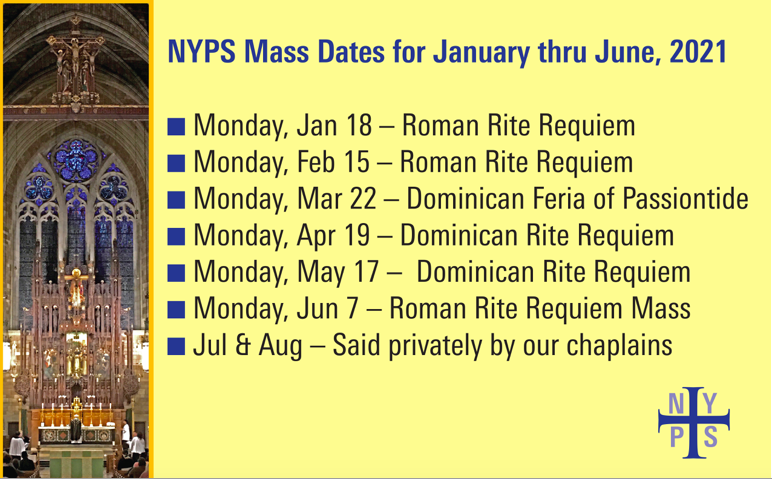
12
Jan
Solemn Mass in the Extraordinary Form of the Roman Rite, Feast of the Baptism of the Lord, will be celebrated on January 13, 2021, 6:00 p.m., at St Augustine Church, 30 Caputo Road, North Branford, CT, Fr. Robert L. Turner, celebrant, Fr. Michael Clark, deacon and preacher.
12
Jan
Fr. Richard Foster, OCD, died on December 25, 2020 at the age of 81.
By Fr. Richard Cipolla
Those who love the Latin language were saddened to hear of the death of Father Reginald Foster on Christmas Day. It was heartening to see the many laudatory obituaries in the press and letters from those who knew Reginaldus, as he was known to his students.
Ever since I heard of his death, I knew that I had to write something myself about this remarkable man whose influence on me was greater than he knew. It is not an exaggeration to say that the two summers I studied with Reginaldus in Rome changed my life. It was not only the Latin that I learned in those weeks under the hot Roman sun. It was also being taught by this unique man, a mixture of ‘60’s rebelliousness, harshnes, a profane veneer- all this- but coming forth through this formidable exterior was a genuine love for his students for his vocation as an Carmelite priest, and above all for his love of the Latin language, a love so powerful that one would have to be a stone not to become an amator Latinitatis under his influene.
I arrived for the first summer session in Rome as a Catholic priest who had taught science and math for many years at both the prep school and college levels, but I always harbored the hope that somehow and someday I would be able to teach Latin. My love of Latin came from my days at Classical High School in Providence, Rhode Island. One day, a friend who knew my fondness for Latin, informed me of an opening to teach Latin at a prep school in Greenwich, Connecticut. I decided to take advantage of this opportunity
I signed up for the Reginaldus’ Rome summer course—which he called the Experience– to brush up on my Latin and to see if I could learn some teaching techniques from this man who had become a legend as a Latin scholar and teacher. I remember meeting him for the first time in a group of some forty people, mostly young, but also including a good number of middle-aged people like me. He, a Carmelite priest, appeared in his version of glory: a worker’s outfit– non-descript short sleeve shirt and pants, and worker’s boots, which was a contrast to my impeccable black suit, Roman collar, and tasseled black loafers. He was carrying a small bottle of what looked like wine and was in fact wine. He explained the basic structure of the course and the division of the students into Juniores and Seniores. He told us to choose what group we thought we would fit into based on our study of Latin. Then he said: “If you are here to have a vacation in Rome, I am telling you right now: Go home! I can’t be bothered with kids from the best schools who think they know Latin and are here for the pizza and wine. Most of you here think you know Latin. Well—you don’t. I don’t care at all if you leave or stay. Up to you. I really don’t care.”
A few did leave that day, either put off by what he said or frightened by this man’s demeanor. More left after the first week. Then those who stayed, like me, began a Latin course like no one of us had ever imagined could exist. It was not a course. It was literally an “experience”.
Before I encountered Reginaldus, I thought I knew Latin. I found out I knew very little. The first part of that summer he deconstructed me—which involved some pain—and then reconstructed me so that I not only significantly improved my Latin skills, but I for the first time truly fell in love with Latin.
Let me give you an example of Reginaldus’ teaching method. We would be reading some obscure text that he had xeroxed (not always clear) and thrown at us to translate together in class. When there was a pause in the translation, we knew what was coming. The dreaded drill. We all kept our heads down pretending to be absorbed in the text, hoping that he would not call on us.
“You”, he shouted, “the one who dresses up like a priest every day like an idiot in this summer heat, I forgot your name, what’s your name? “ “Ricardus”, I answered in dread. “OK, hot shot, look at that verb in the fourth line of the page we are reading: tell me everything you know about it.” I answered: “Third person plural, imperfect subjunctive passive.” Next question: “Why is it in the subjunctive?” Pause, mind racing. Couldn’t be sure why it was in the subjunctive, said to myself: I will choose something sort of obscure to impress him. “Relative clause of characteristic” I boldly asserted. “What the hell is a relative clause of characteristic?” he shot back. “THERE IS NO SUCH THING AS A RELATIVE CLAUSE OF CHARATERISTIC! Stupid people who write Latin textbooks invent these things because THEY DON’T KNOW LATIN!” I swallowed hard and was thankful that my hot-seat experience was over for today. But I was wrong. I was still on his hook. He then proceeded to ask me how the form of the verb would change if it were in the context of an indirect statement. I somehow managed to answer that correctly. But he was not satisfied. On he went asking me questions—until I failed to answer correctly. Then he uttered what sounded like a grunt, and went back to translation.
That process of deconstruction was not pleasant. But it was in the reconstruction under Reginaldus that followed that I began to understand Latin not as a puzzle to be solved but as a living language whose beauty was not always easy to unlock, but the act of unlocking was part of the beauty. It was the discovery of that difficult beauty that enabled me to teach Latin for many years to the most gifted students in my school and to enjoy the wonderful fruit of seeing my students understand and come to love the tough beauty that is the Latin language. They will never forget the lacrimae rerum, the tears of things, of Aeneas.
My second summer with Reginaldus was an experience of great happiness. We developed a real relationship that transcended his 1960s post-Vatican II spirit and my own deeply traditional faith, a relationship that I believe was amicitia, friendship. It was during that second summer that I became one of the members of Sub Arboribus. Reginaldus invited a small group of the Seniores to read Latin “under the trees” in the early evening after the last class. We would get something to eat and then meet him on the grounds of his monastery on the Janiculum Hill. He would bring a jug of wine, and we would bring our copies of Ovid’s Metamorphoses. There in the twilight we would take turns declaiming these fantastical mythical tales in glorious dactylic hexameter. I remember my fluency surprised me and gave me great delight—and this was not mainly because of the wine.
Reginaldus would organize field trips to sites that are important to Latinitas such as Horace’s farm and St. Thomas Aquinas’ birthplace. The buses that he hired for these excursions were old and beat up. Not much comfort. Reginaldus handed out texts on these trips, texts in Latin poetry meant to be sung. And he led us in these songs. Who else but Regnialdus would know enough about the various meters of Latin poetry, so that we could sing these poems with his direction. The melodies were mostly from the Monastic Breviary, which chant melodies he had learned from singing the Office in his monastery. And so we sang one of Horace’s Odes to the melody of a Vespers hymn that was written in the Sapphic Strophe meter. Quite an—I must use the word again—experience.
But there was one field trip that for me was in its way a life-changing experience that deepened my faith, my understanding of beauty and the power of Latin. He brought us to Ostia, which was in ancient times the seaport for Rome at the mouth of the Tiber. It was there that St. Augustine and his mother, St. Monica, staying at a hostel in Ostia, had a mystical experience while standing at a window. The intensity and beauty of this experience Augustine describes in Book IX of his Confessions. The area where the hostel was, near the sea, has long since been filled in by the silt of many centuries, so that the place where the hostel stood is now a grassy field with no water in sight. And there we sat and read together this passage from the Confessions. Reginaldus finished the passage himself. When he finished, he stood up and pointed up and over some small buildings. And he said: “It was there—there! That’s where this happened when they heard the silence!” And then there was silence. And we sat there for a few minutes in that silence, in that place, on that day.
Some years after that I took a group of my own students to Ostia, and we sat in that field and read from the Confessions the passage telling of that mystical experience which the son and his mother experienced so many centuries ago. I read the last part myself to my students. Then I stood up and pointed up and over, and I said to my students: “It was there—there! That’s where this happened when they heard the silence.” And there was silence.
Richard Gennaro Cipolla
I’ve spoken directly with others who treasure Reginald Foster as a friend, a teacher, a “character” and above all a Latinist. I have also read similar published appreciations. The Latin language is an integral, irreplaceable part of Western culture and Latin Christianity. Fr. Foster did much to revitalize its active use.
Nevertheless, a society devoted to the Traditional Latin Mass under Summorum Pontificum – like this one – in all candor must acknowledge that Fr. Foster publicly opposed this cause. Furthermore, while leaving a network of devoted students, Foster presided over a decades-long decline of Latinity at the Vatican itself. Thus, his official, institutional impact seems to have been decidedly more limited than his private influence.
Stuart Chessman
11
Jan
10
Jan
From Fr. John Perricone:
Beginning next Sunday, January 17th, our Traditional Mass will be offered at St. Joseph’s Church in Jersey City, located at Pavonia and Baldwin Avenue. Some of you may recall that we have celebrated several Masses there for different feasts. St. Joseph’s seems to afford better opportunities for us to carry out the various liturgical feasts to which we have become accustomed.
We would like to thank Fr. Thomas, pastor of St. Paul’s, and his ever helpful curate, Fr. Joseph, for all their gracious indulgences over these past several months.
The Mass at St. Joseph’s will be celebrated at the same time as this one – 2:00 PM.
<><><><><><><><><><><><><><><><><><><><><><><><><><><><><><><><><><>
St. Joseph Roman Catholic Church
511 Pavonia Avenue
Jersey City, NJ 07306
(201) 653-0392
There is parking at the south end of the church.
10
Jan
It was with joy that we attended a Solemn Mass at St. Josaphat Church in Bayside, Queens, at which Joseph Falciano, FSSP, served at the subdeacon. Mr. Falciano, second-year seminarian at the Our Lady of Guadalupe Seminary in Nebraska, recently received First Clerical Tonsure. His brother, John, a first-year seminarian at the same seminary, served as master of ceremony. Fr. Stephen Saffron was celebrant. Bro. Frantisek of the Franciscan Friars of the Renewal served as deacon.
This was the first Sunday solemn Mass to be celebrated at this church since Vatican II. St. Josephat’s now has on its schedule a 7 am daily traditional Mass, Monday, Tuesday, Wednesday and Friday (except First Fridays, when the traditional Mass is at 7:30 pm).

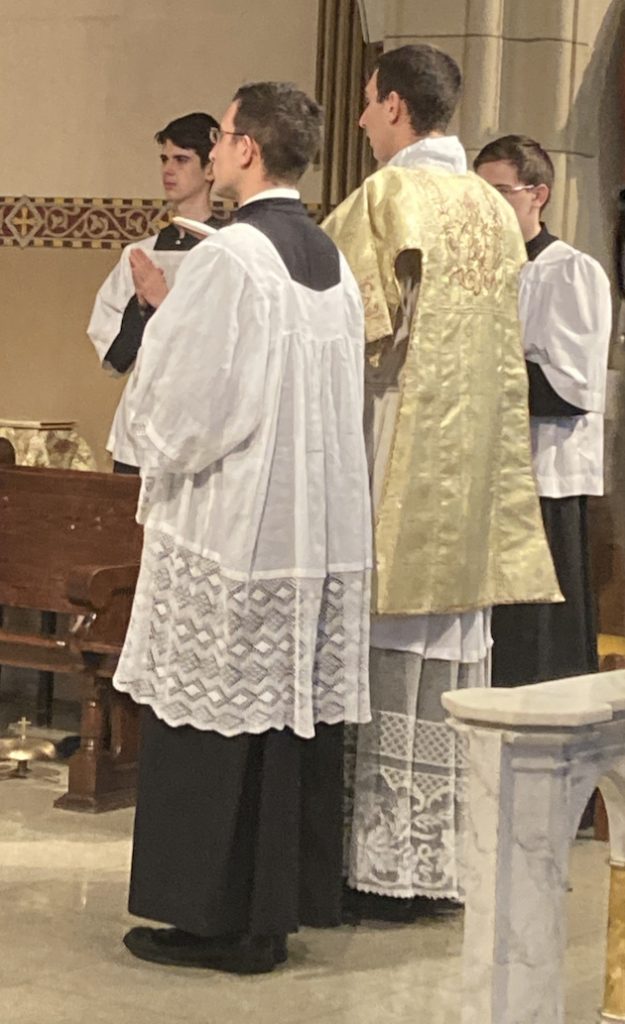
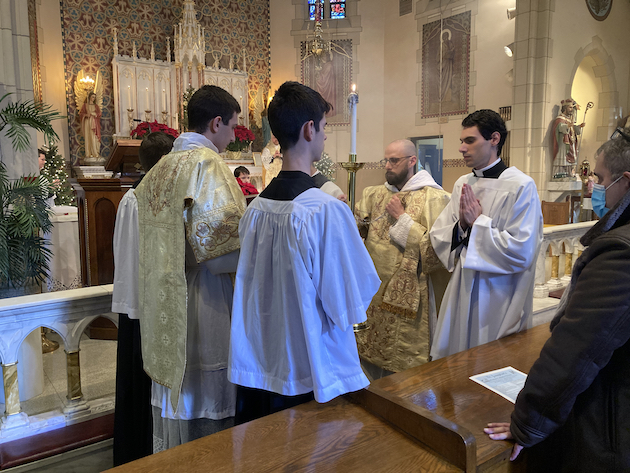
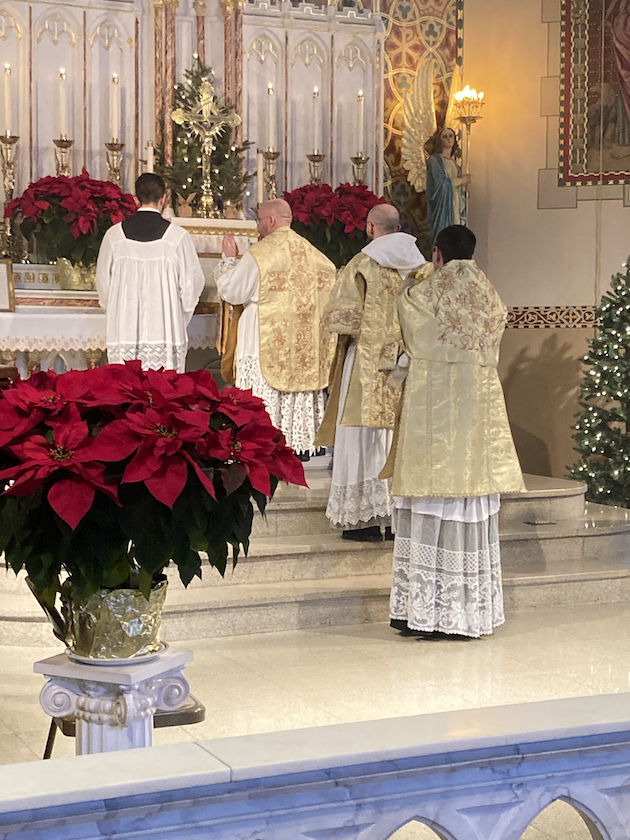
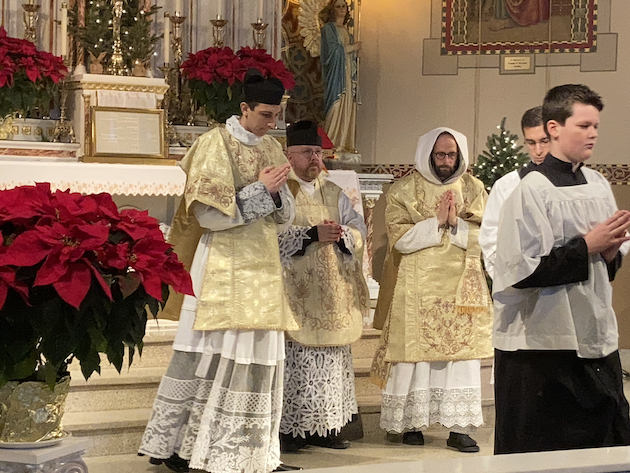
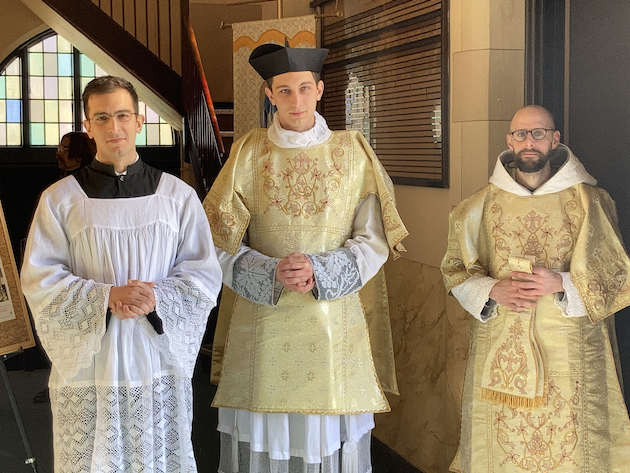
9
Jan
Solemn Mass at St. Josaphat
Posted by Stuart Chessman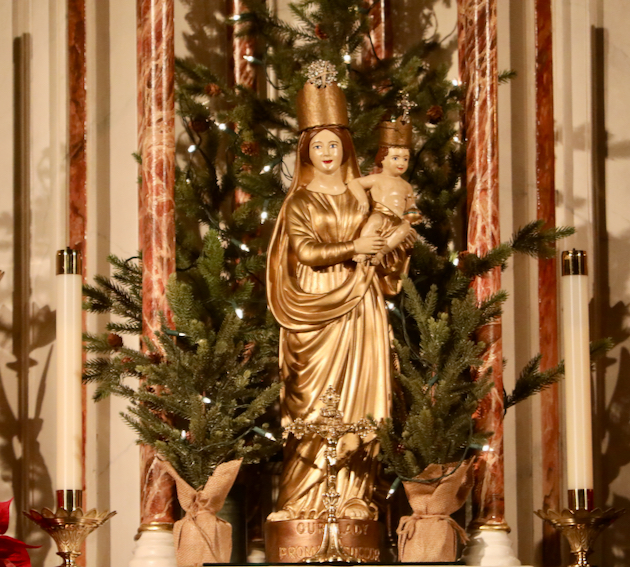
In Bayside, Queens, NY, in honor of Our Lady of Prompt Succor. We have previously described this devotion, which is popular in Louisiana.
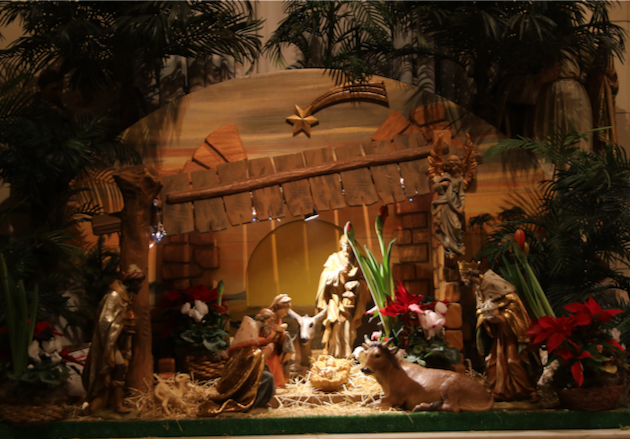
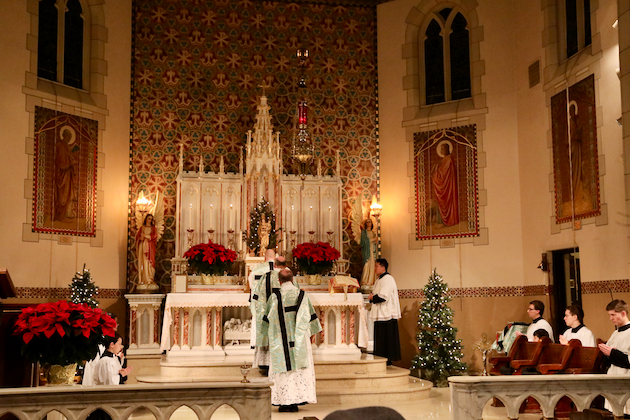
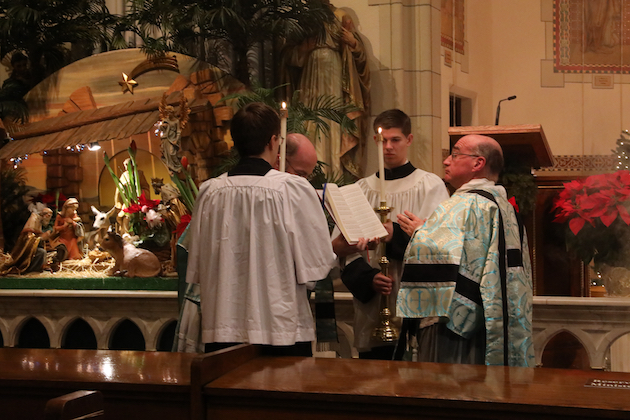
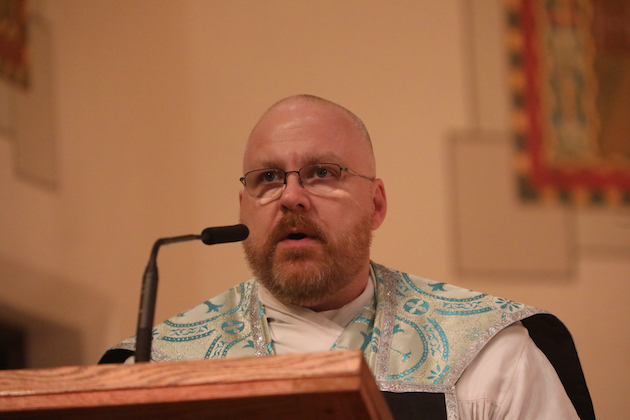

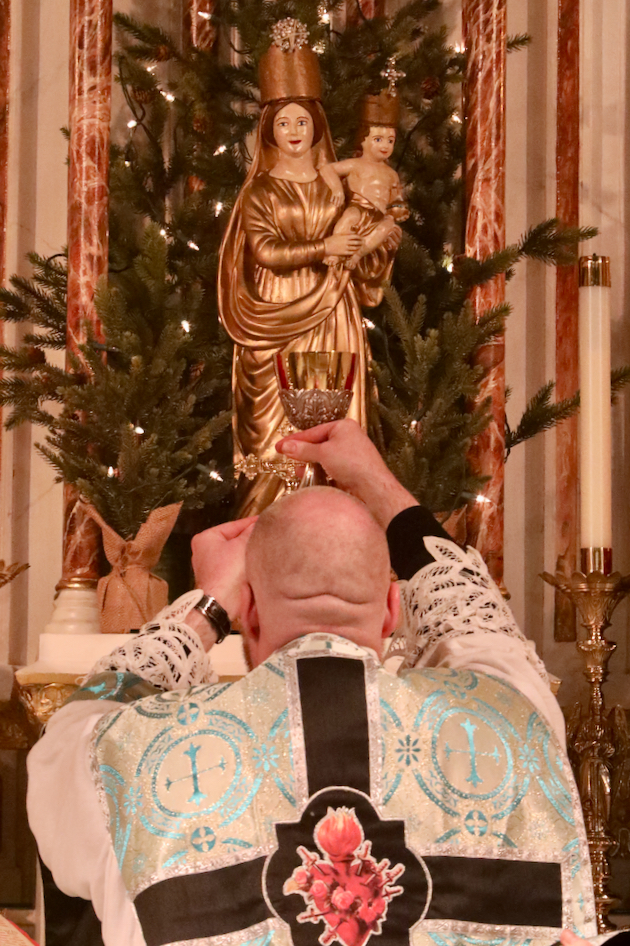
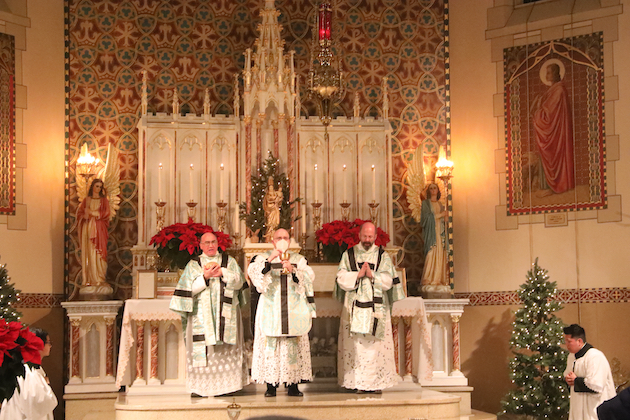
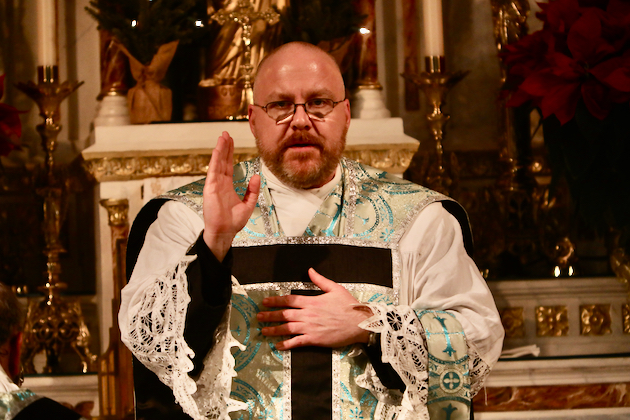
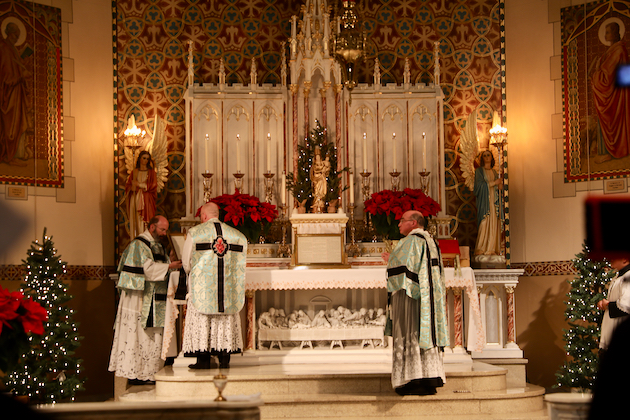
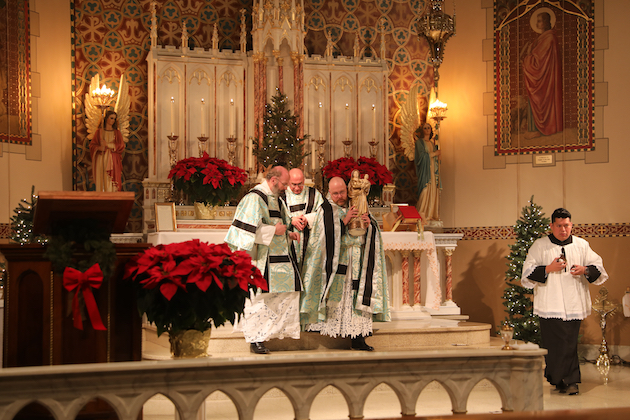
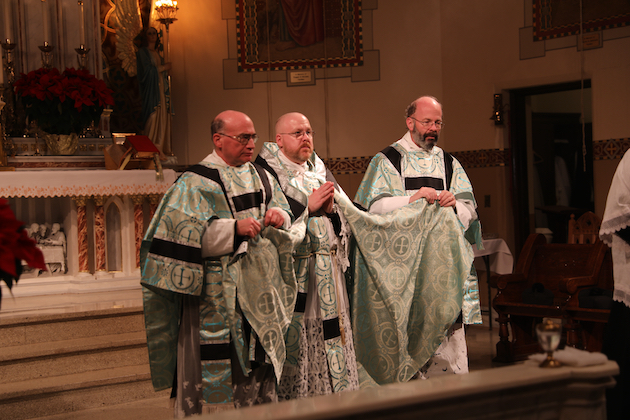
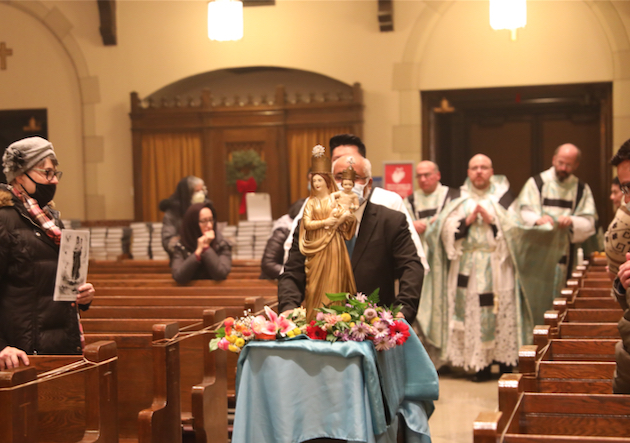

6
Jan
Opportunity for Artists!
Posted by Stuart Chessman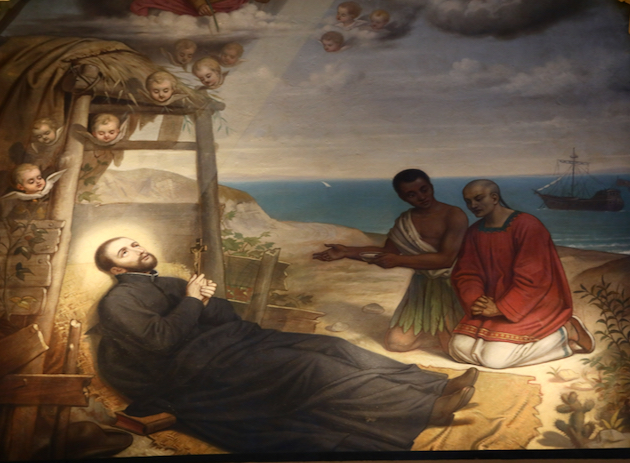
A call to artists – for new art at St. Francis Xavier parish (Jesuit) in New York. Whether, however, the potential commissions will have anything to do with Christianity is another question entirely. You see the problem is that in the present church the images are overwhelmingly those of white men (as perhaps befits a church founded by the Jesuit order – at least as it understood itself previous to the Vatican Council). The exceptions (the Virgin Mary, Saint Catherine of Siena) are also white. And the whole church had been restored at great expense in the not-too-distant past. But, as the project’s “Statement of Purpose” explains:
The Church of St. Francis Xavier is committed to pursuing racial and social justice in our community. Among many other initiatives, we would like to commission new art work for the church that more reflects the diversity of our community and the values we profess.
Our ideas for the project include and are not limited to:
- Art that depicts Jesus as a Black, Indigenous, Person of Color, so as to represent groups historically excluded, marginalized or exploited in the United States including but not limited to African Americans, Native Americans and migrants from Latin America.
- Art that features individual saints of various races/culture/nationalities. For example, and not limited to: Josephine Bakhita, Charles Lwanga, Oscar Romero, Kateri Tekakwitha, Andrew Kim Taegon, Lorenzo Ruiz, and The Martyr Saints of China. Also, Blesseds Augustus Tolton, Pierre Toussaint, Sr. Thea Bowman and Julia Greeley.
- Art that depicts and honors heroes in the arena of racial and social injustice. For example, and not limited to: Martin Luther King, Jr., Harriet Tubman, John Lewis, Julia Greeley, Bayard Rustin and Fannie Lou Hamer. This could also include some local heroes who volunteer at the Xavier Mission Welcome Table, Shelter, etc.
- Possible themes depicting social/racial justice might be the parallel of Jesus on the cross with lynched African Americans hung from a tree or images of African American mothers grieving their children near the Pieta statue.
In other words, the proposed new art is political, not religious. Or put another way, the content is entirely political but may employ religious forms. As the parish’s instructions for interested artists explicitly state:
PLEASE SPECIFY HOW THIS PROJECT ADDRESSES OUR MISSION OF SOCIAL JUSTICE AND REPRESENTATION OF PEOPLE OF COLOR IN THE ICONOGRAPHY WITHIN ST. FRANCIS XAVIER
There follow, however, contradictory suggestions regarding “figurative art”:
The current artwork in the Church is almost exclusively figurative. It is important that the artist applicants consider whether additional figurative artwork best accomplishes the stated goals of this commission, or whether a non-figurative approach would better reflect our goals in a powerful and impactful way. Said another way, the presentation of historically accurate representations and abstract, non-objective, and conceptual artwork are encouraged.
The Conciliar/Jesuit goal of aligning with the 20th Century reign of the abstract, non-objective, and conceptual obviously clashes with the political objectives previously outlined. A perennial problem for the left that the political art of the Soviet Union and the world communist movement had to deal with as early as the 1920’s.
Submissions are due by March 1. All the details can be found on the St. Francis Xavier parish website:
SOLICITATION OF INTEREST IN
THE INSTALLATION OF NEW ART IN OUR CHURCH
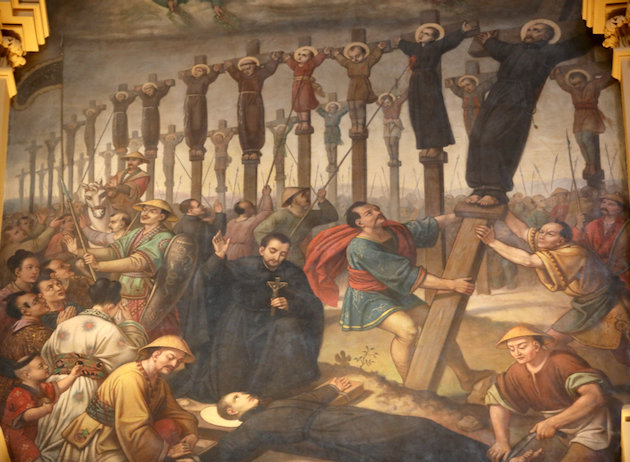
5
Jan
Spring Semester Gregorian Chant Classes for Children begin Tuesday, Jan. 26th
All children ages 5 to 15 are invited to participate. Full-time (on-line and in-person) and Part-time (on-line only) enrollment is available. Classes meet on Tuesdays, alternating weekly between on-line instruction via Zoom and in-person classes at Immaculate Conception Church in Sleepy Hollow, NY (199 N. Broadway). Full-time students will sing for two Masses at Immaculate Conception this semester. Classes are taught by Dr. Jennifer Donelson-Nowicka, Charlie Weaver, and Elizabeth Weaver. Registration deadline: Jan. 26th. To register or for more information, please contact Dr. Jennifer Donelson-Nowicka at info@jenniferdonelson.com. The registration form is available at: https://forms.gle/oj2h6pWRCcGtnTvw5.

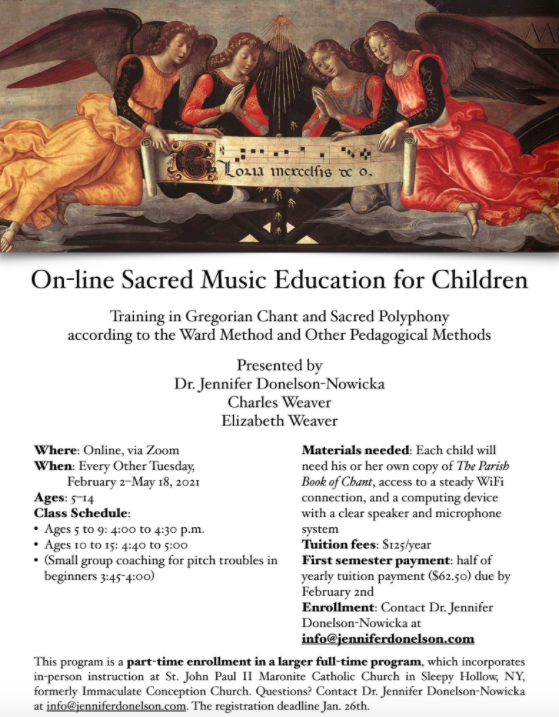
5
Jan
Contact us
Register
- Registration is easy: send an e-mail to contact@sthughofcluny.org.
In addition to your e-mail address, you
may include your mailing addresss
and telephone number. We will add you
to the Society's contact list.
Search
Categories
- 2011 Conference on Summorum Pontifcum (5)
- Book Reviews (95)
- Catholic Traditionalism in the United States (24)
- Chartres pIlgrimage (17)
- Essays (176)
- Events (670)
- Film Review (7)
- Making all Things New (44)
- Martin Mosebach (34)
- Masses (1,343)
- Mr. Screwtape (46)
- Obituaries (15)
- On the Trail of the Holy Roman Empire (22)
- Photos (347)
- Pilgrimage Summorum Pontificum 2021 (7)
- Pilgrimage Summorum Pontificum 2022 (6)
- Pilgrimage Summorum Pontificum 2023 (4)
- Sermons (79)
- St. Mary's Holy Week 2019 (10)
- St. Mary's Holy Week 2022 (7)
- St. Mary's Holy Week 2023 (7)
- St. Mary's Holy Week 2024 (6)
- Summorum Pontificum Pilgrimage 2024 (2)
- Summorum Pontificum Pilgrimage 2025 (4)
- The Churches of New York (198)
- Traditionis Custodes (49)
- Uncategorized (1,369)
- Website Highlights (15)
Churches of New York
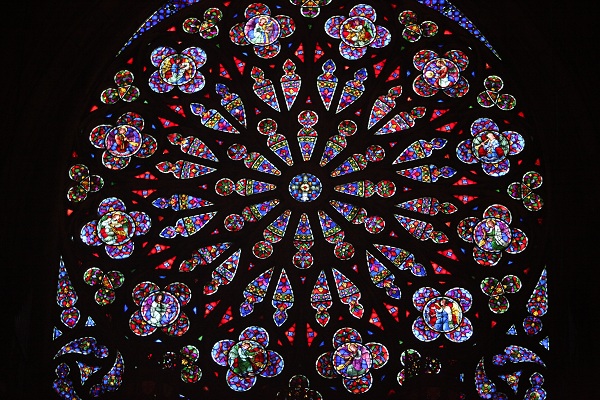
Holy Roman Empire

Website Highlights
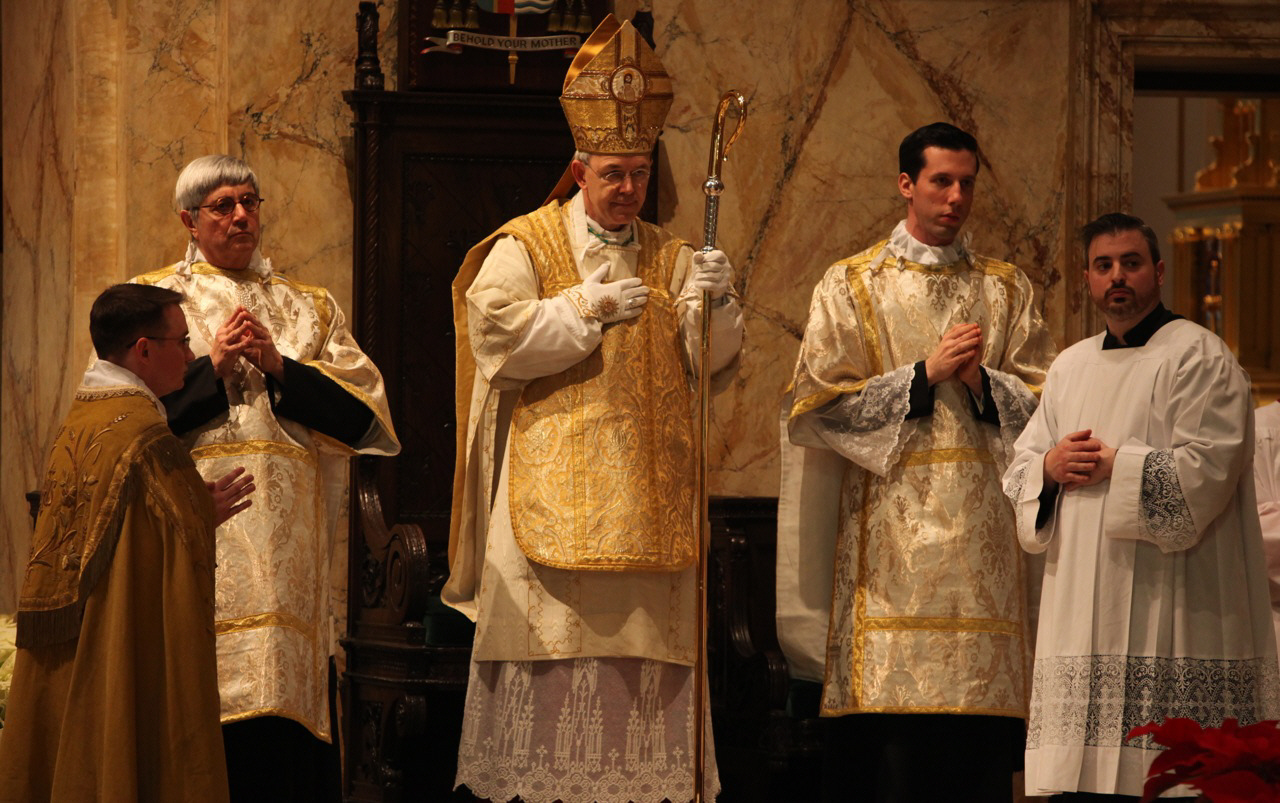
Archives
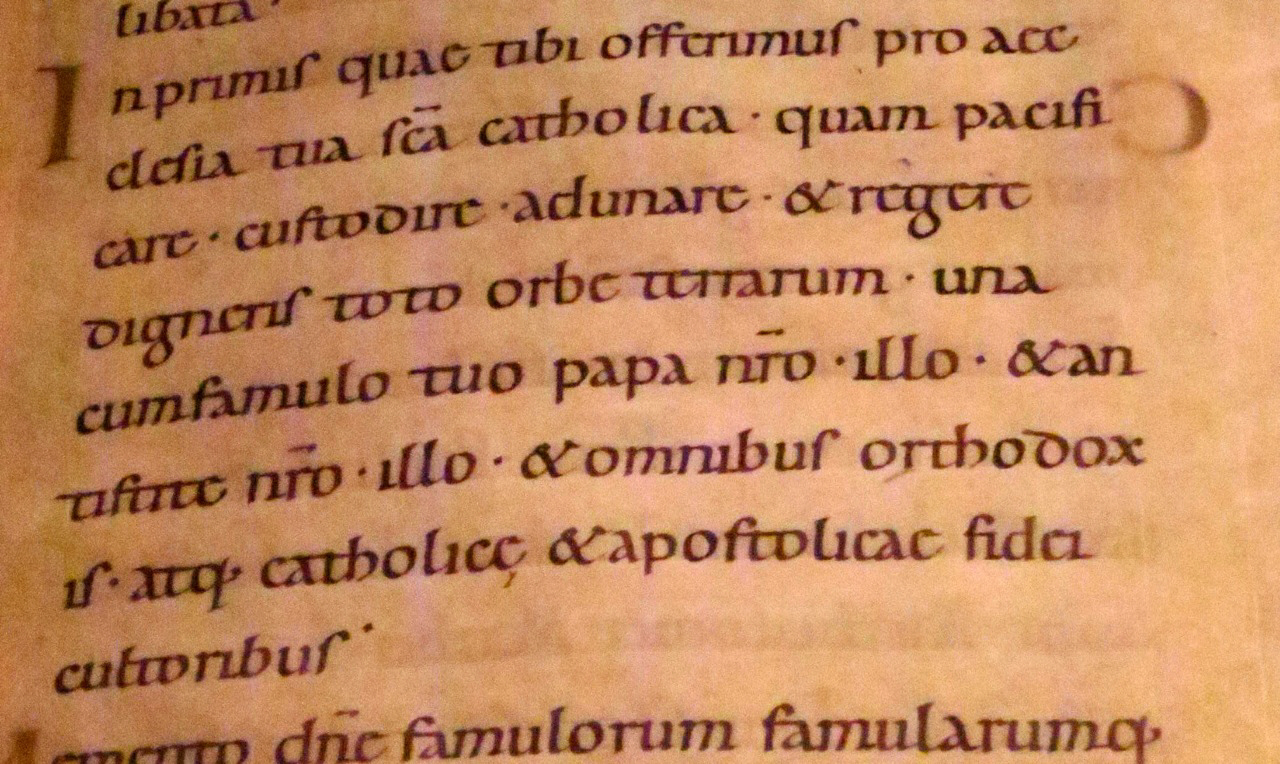
[powr-hit-counter label="2775648"]
